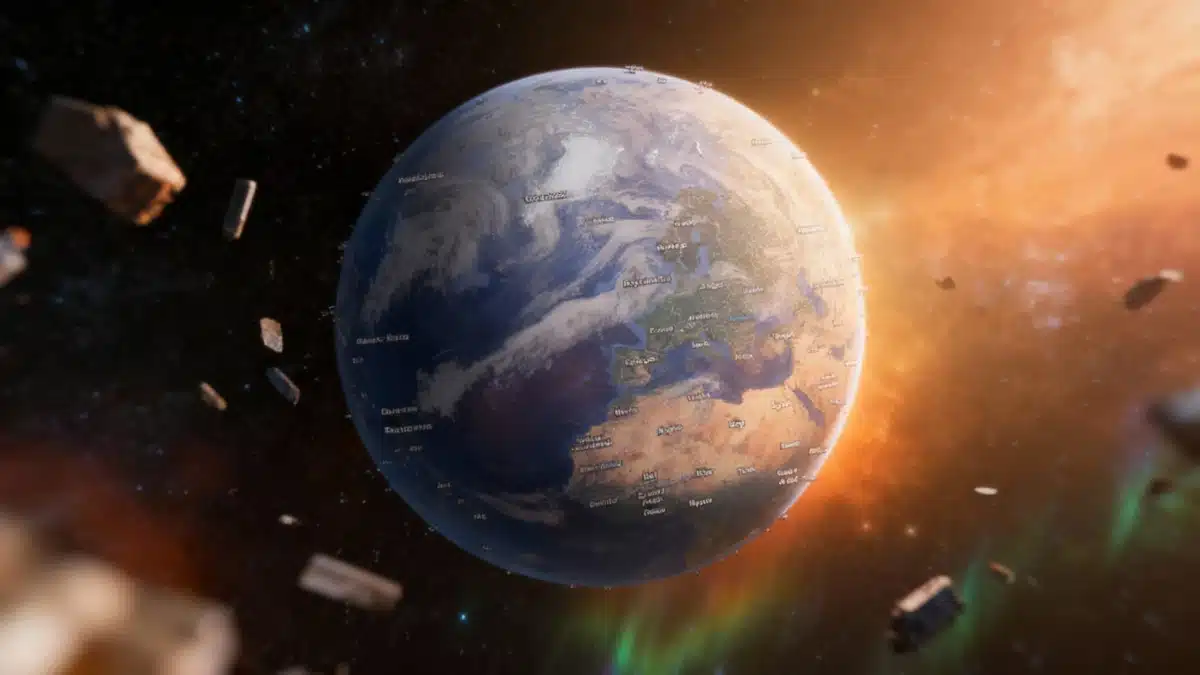Think the Great Wall of China is the single most visible human-made marvel from space? It’s time to dismantle that myth, brick by brick. Turns out the true champion isn’t halfway across the world, but right here in Europe—and hardly anyone knows about it.
The Persistence of an Urban Legend
For ages, the story has gone around that the Great Wall of China is colossal enough to be seen from outer space. Admit it, we’ve all repeated this at a dinner party at least once! But dig a little deeper and you’ll find that this claim is more urban legend than astronomical fact. Despite stretching an impressive 8,851.8 kilometers across the Asian landscape, the Wall isn’t the sky-high spectacle you’d expect.
The idea first crept into history courtesy of a British antiquarian from the 18th century. In a letter, he mused that the structure « could very well be visible from the Moon » (throwing in a conditional, mind you—so even he wasn’t buying his own story). Fast forward a couple of centuries, and people continue to take this speculation as fact. Just for the record, when Neil Armstrong—the man who literally strolled on the moon—was asked about the Great Wall, he was unequivocal: in space, he didn’t see a thing.
Size Isn’t Everything: The Wall’s Invisible Secret
Before you say, « But 8,851.8 kilometers! », it helps to know why the Wall slips under the cosmic radar:
- It’s actually not that wide, especially compared to highways.
- It isn’t brightly lit at night, unlike city roadways.
- From even a modest altitude—say, 15 kilometers up—you can barely make it out.
Photographs taken from above suggest the legend crumbles even earlier than you’d think; by 15 kilometers, the Wall gets lost among nature’s own lines: rivers, ridgelines, and winding roads. Even at 120 kilometers above sea level (a height astronauts might consider « very low Earth orbit »), differentiating it from the landscape is nearly impossible. Don’t just take our word for it—head over to Google Earth, drop a pin 100 kilometers northwest of Beijing, and start zooming out. Spot the Wall at 10 kilometers high? Good luck.
So what do our astronauts actually see up there? The glow of city lights, busy highway networks, and not, it turns out, the world’s most famous wall.
The True Giant: Spain’s Shimmering Sea of Greenhouses
Here’s the plot twist. The most easily visible human construction isn’t a fortress, a skyscraper, or a dam—it’s Los Invernaderos de Almería, an expanse of dazzling white greenhouses on Spain’s Andalusian coast. This isn’t a fringe claim either: Pedro Duque, the first Spaniard to blast off into orbit, says so himself. He should know—he spent a fair bit of time looking out the window of the International Space Station, 400 kilometers up.
Los Invernaderos, stretching across a jaw-dropping 40,000 hectares, are coated in bright white plastic. No wonder they’ve earned the nickname “the sea of plastic.” These aren’t just a blip on Europe’s radar; they’re a culinary engine, producing fruits and vegetables for tables across the continent from France to far beyond.
Let’s be fair: Pedro Duque might have a patriotic bias (he became a minister in 2018, after all), but he’s not exaggerating how clearly this vast, pale expanse stands out. Against the region’s earthy hues, it practically waves hello to anyone orbiting above. Try it yourself—run the same Google Earth experiment over Almería, and you’ll see just how strongly this mega-greenhouse jumps out, even at high altitude.
The Price of Visibility: An Environmental Challenge
Of course, with great visibility comes great responsibility—or in this case, a hefty environmental burden. According to Green Peace Spain, the production, use, and waste of all that plastic has a significant impact on the plants and animals nearby, becoming a major source of pollution. The local region’s very livelihood rides on these agricultural giants, and Europeans far and wide rely on them for a steady food supply. But finding a solution to their ecological footprint is a true headscratcher.
- The plastic reflects sunlight, making the whole zone unmistakable from above.
- This brilliance underscores a difficult truth: pollution from these materials affects the entire local ecosystem.
- While the world enjoys the produce from Almería, the region itself bears the brunt of the environmental cost.
So next time someone throws the « Great Wall from space » trivia your way, you can set the record straight—with a wink and a nod to the Spanish greenhouse fields shining bright for all of Earth (and some lucky astronauts) to see. Just remember: not everything that’s big is visible—but sometimes, what’s clearly visible demands we take a closer look at the impact we leave on our planet.

John is a curious mind who loves to write about diverse topics. Passionate about sharing his thoughts and perspectives, he enjoys sparking conversations and encouraging discovery. For him, every subject is an invitation to discuss and learn.






